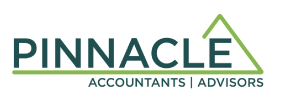
Living Out Allowances
“Living Out Allowances” or “Subsistence Expenses” are a great way to get funds out of a corporation and into the shareholder’s hands on a tax free basis.

They are usually concerned about two broad issues:
- How to establish the appropriate allowance; and
- How to do the bookkeeping for the out of town expenses and related recoveries from their customers.
Two important principals underlie our advice. Firstly, we want to maximize the tax free allowance available to the shareholder subject to a reasonable level of risk of adjustment from the tax department. Secondly, we want to keep the system as simple as possible to minimize administrative costs to the client.
Appropriate Allowance
It is important to establish the appropriateness or “reasonableness’ of the allowance up front. An “unreasonable” allowance exposes the client to double taxation as the CRA can disallow the corporate expense AND add the unreasonable allowance to the shareholder’s income as a taxable benefit. This is not a good outcome as it can result in a tax cost of up to 70% of the value of the benefit, plus penalties and interest.
So, what is a “reasonable” allowance? Or, from the client’s perspective, how much can be deducted without exposure to significant risk of reassessment?
Each case has its own set of facts and we always seek to understand the client’s specific fact pattern before giving advice; however, here are some of the sources we can look at in considering reasonableness:
- Industry standards – what is normal in the particular industry?
- Union rates – what union agreements are similar to our client’s situation and what tax free living out allowances do those agreements provide?
- Treasury Board of Canada – publishes established rates for government employees that CRA has said it will generally consider as reasonable.
- Contracts with customers – does the corporation have agreements with its customers to recover subsistence expenses at a stated rate?
- Arms-length employee rates – does the corporation have similar negotiated arrangements with arms-length employees?
- Actual expenses – how does the allowance compare to the actual expenses incurred by the shareholder?
We work with each client to establish a “day rate” appropriate to that client’s circumstances.
Accounting for Subsistence Revenues and Expenses
Here is how I generally recommend corporate clients deal with “subsistence expenses” or “living out allowances”.
Revenue
Charges by the corporation to customers should be invoiced and treated as revenue of the corporation with the appropriate GST/HST charged to the customer. Some suggest that the credit should be to shareholder’s loan as a “flow through” but I think that is bad policy for a number of reasons:
- The contract is between the corporation and the client. Charges to the client are revenue of the corporation.
- Subsistence revenue is a taxable supply for GST purposes. Crediting the revenue to shareholder’s loan means the collections will be more than 5% of the revenue and potentially give rise to queries from CRA. Alternatively, some clients make the mistake of not collecting GST on subsistence revenue because they believe it is a flow through and a non-taxable supply.
- Treating the subsistence charge as revenue allows the underlying meals expenses to be claimed 100% for tax purposes.
- If the corporation is at risk of being a “personal services business”, coding the subsistence expense directly to shareholder’s loan will strengthen CRA’s argument.
So treatment as revenue is both theoretically correct and the most practical solution.
Expenses
As a general policy, we want the living out allowance or subsistence expenses to at least equal the subsistence revenue due to their tax free nature.
There are four common ways of dealing with the related expenses:
- Record them all in the general ledger in relevant expense accounts and “top up” the allowance for the difference between the total expenses and the appropriate total allowance at the yearend;
- Charge the actual expenses to the shareholder loan as personal expenses (ignoring GST). Then provide a periodic (monthly, annual) credit to the shareholder.
- Have the shareholder pay all of the expenses outside the corporation and credit the an allowance to the shareholder’s loan at the end of the year;
- Have the shareholder pay all of the expenses outside the corporation and issue a regular “expense” cheque to the shareholder.
Remember in all cases that the GST ITCs should be claimed on the allowance and the resulting expense should at least equal the revenue.
Option 1 requires a careful segregation of expenses between those that are covered/not covered by the subsistence revenue as well as a yearend aggregation of various expenses for comparison to the agreed allowance. In my opinion, there are too many chances for error in this option and it is more complicated than necessary leading to higher bookkeeping and accounting expenses.
Option 2 requires more bookkeeping expense than necessary as personal expenses are co-mingled in the accounting records of the corporation.
Option 4 requires the issuance of a regular cheque and opportunities for error.
So I prefer Option 3 for simplicity, minimization of administrative costs and reduction of chances of error. Also, Option 3 is very easy to defend in an audit of either GST or corporate tax. If the shareholder needs the cash on a more regular basis, just take a draw against the shareholder’s loan.
We have a particular client who travels extensively in his business. Rather than recording all the travel and vehicle expenses in the records of the business, he simply keeps a journal of his travel days and kilometer driven. At yearend, we calculate a tax-free living out allowance by multiplying his travel days by his daily rate and calculate a vehicle allowance by multiplying his business kilometers by the appropriate mileage rate. He then gets a credit in his shareholder’s loan account for these amounts.
No messy receipts flying around in his truck, no bookkeeping cost to record the hundreds of transactions and the yearend is actually simpler to prepare. Best of all, we have successfully defended this system on audit for a number of clients. It is easy for the CRA auditor to understand and document for her files and very difficult for them to challenge.
Conclusion
Living out allowances are great tax planning but they need to be dealt with appropriately at the commencement of our engagement and reviewed periodically for changing circumstances. Everyone’s fact pattern is unique.
Ask our professionals to design a system than is right for you!
Written by: Doug Johnstone, CA/CPA
